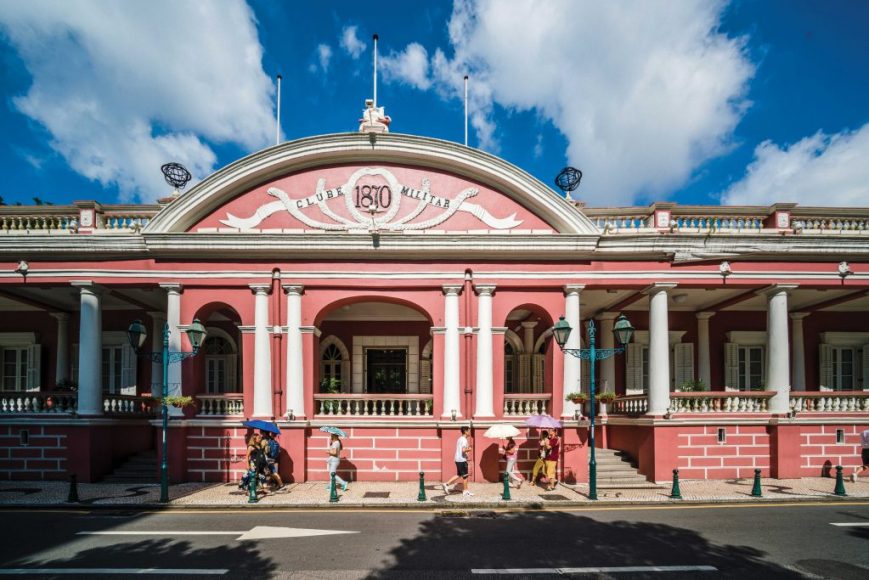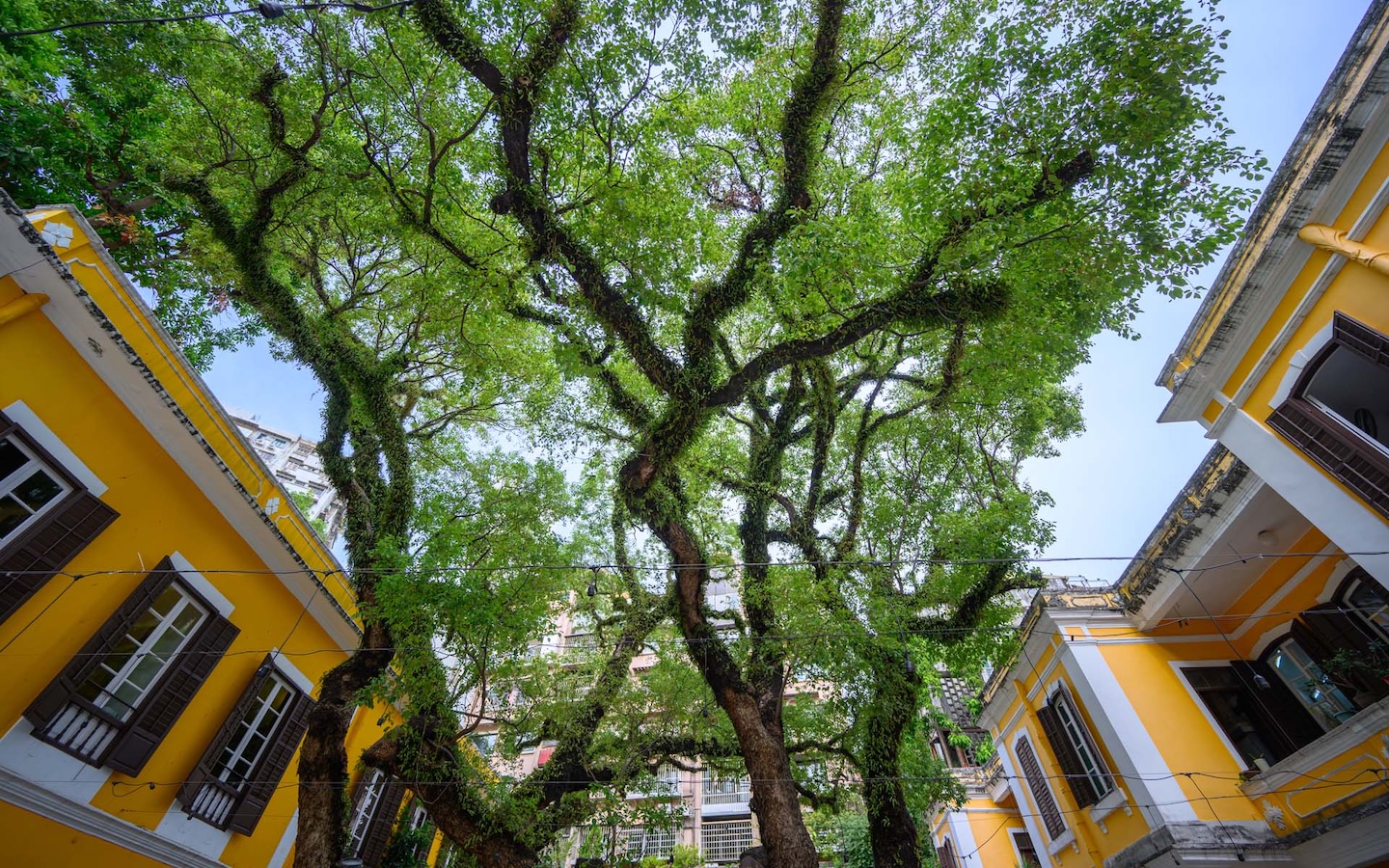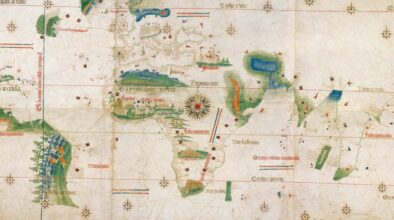Last Updated: 4 January 2021
As the Macau Military Club turns 150 this year, we look into this venerable institution’s colourful past and discover why it’s still as relevant to city life today as it has been for the past century and a half.
Macao has slowly transformed since the Portuguese first established a settlement in the territory more than 450 years ago. Tourist hotspots like the Ruins of St Paul’s and the Mandarin’s House still proudly stand in the centre of the city but many buildings, institutions and cultural ways of life have come and gone over the years. One historical venue, however, isn’t just still standing – it’s still being used as an important cultural hub. Welcome to the Macau Military Club, a beacon of traditional values and modern thinking that celebrates its 150th anniversary this year.
Few institutions in Macao have managed to preserve their importance and place in the city quite like the Military Club – known in Portuguese as ‘Clube Militar’. The building houses a club and restaurant that sit in Avenida da Praia Grande opposite a structure that couldn’t look any different if it tried: the sky-high, majestic Grand Lisboa. But where the Grand Lisboa stands as a symbol of Macao’s recent economic and tourism success, the Military Club is a symbol of how an older way of life in the city can successfully adapt to modern times.
Nothing remains of the club’s historic library. It was stolen, eaten by white ants or burned, as it was, in the back of the building.
Since its beginnings in 1870 as an exclusive social venue for members of the Portuguese military and their guests, the club – then known as the Military Guild or ‘Grémio Militar’ in Portuguese – has reinvented itself by, over time, opening its doors to both civilians and foreign visitors. As a result, it has continued to thrive and become much more than just a pretty landmark – it has become a crossroads of history and culture. Many notable historical figures from the city, as well as China and Portugal, have mingled in the club’s dining room and salons over 150 years. For instance, the ‘founding father of the Republic of China’, Dr Sun Yat-sen, who once lived and worked in Macao, was honoured at the club in May 1912 – the same year the Republic of China was formed – while on a personal visit to the city.
Another famous man to grace the club was Portuguese symbolist poet Camilo Pessanha, who gave a conference on ‘the pleasures of learning the Chinese language and culture’ inside the club’s walls in March 1915. Pessanha, who went on to write his most celebrated poems in Macao which were compiled in the ‘Clepsydra’ collection, was once a district judge in the city. He lived in Macao for 32 years and died here in 1926.
According to the club’s records, in 1872, just two years after it opened, any ‘gentleman who has been granted military honours’ could also use the facility. By 1890, around a third of the club’s members were non-military, with seven of them being British. And in 1953, it was decreed that ‘civilians and foreigners, for their social position and education’ then had ‘the right to be admitted to the facilities’. Macao military history researcher Ricardo Borges says the club has been able to adapt to the many changes over its history by welcoming in civilians.
Borges, whose military and fortress knowledge in Macao is extensive, speaks to us in the club’s lounge as we sit among the lush tropical plants under swirling wooden fans. He tells us that for many years, the patrons of the institution were the ‘intelligentsia’ of the city – those people seen as the educated ‘movers and shakers’ of the day. Grandson of Manuel de Mesquita Borges, a former member of the club’s board in the 1950s, Ricardo Borges, recalls the ‘great social role’ that the military served in Macao for more than 100 years since the club’s opening – but he adds that important civilians and, of course, the city’s Governor, were equally paramount to the club. “For decades,” he says, “the club was where all these intelligent people gathered to discuss current events and the geopolitics of China and Europe. This was where the brilliant minds of Macao got together.”
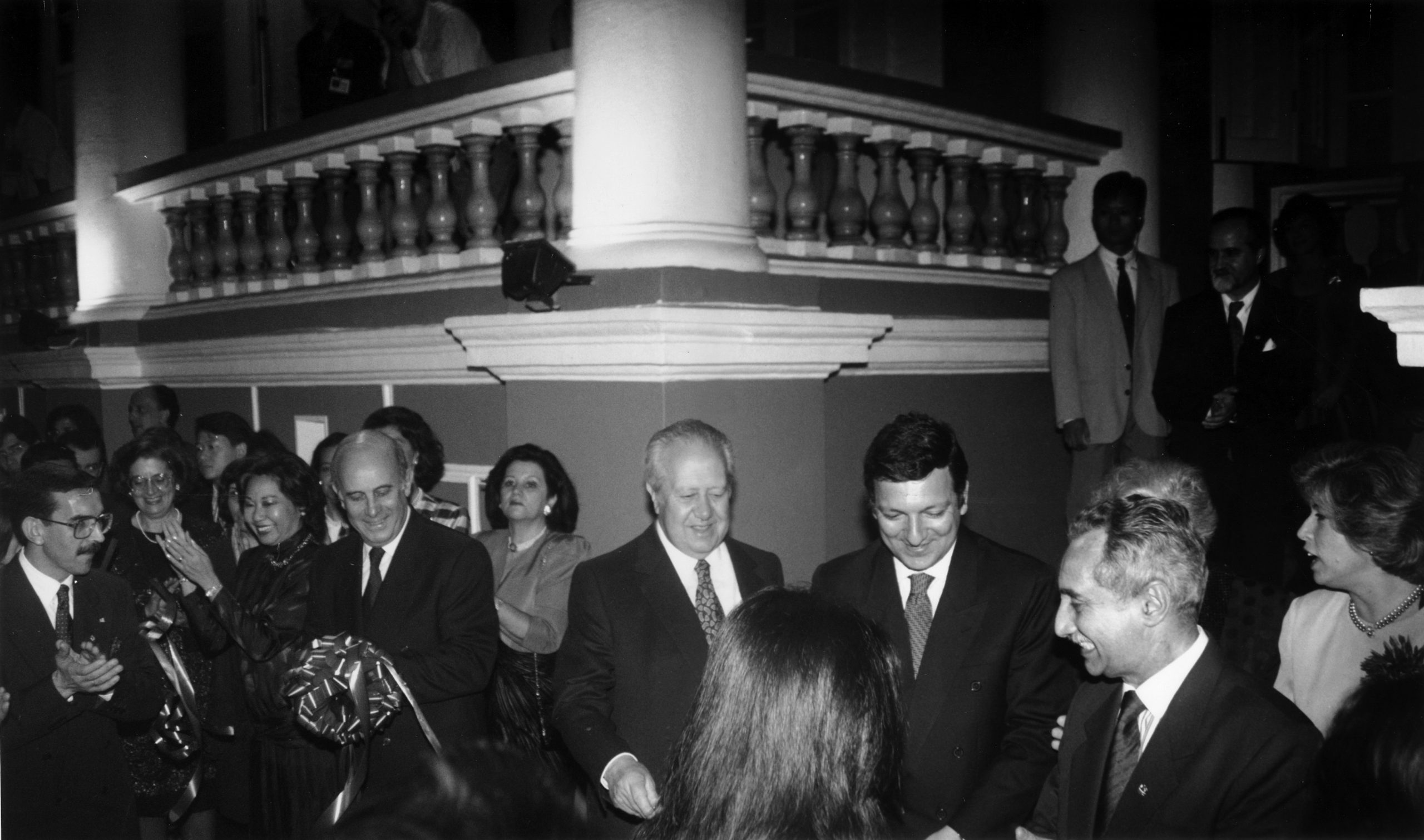
A cultural hotspot
The club hasn’t just been known for its famous and important patrons over the years. It’s also been known as a premier place in Macao to enjoy the arts. Shortly after it opened, it started organising conferences and then ‘soirées’ – evening parties featuring an array of music and entertainment – were the order of the day. These often starred opera and aria singers like Annie Loureiro, who excelled at interpreting the works of opera composers such as Italy’s Gaetano Donizetti. Banquets were also frequent attractions, often held in honour of important visitors from Portugal, China or Hong Kong. In the early years of the club, it was said that these banquets ‘rivalled’ the ones held by the Governor at his residence.
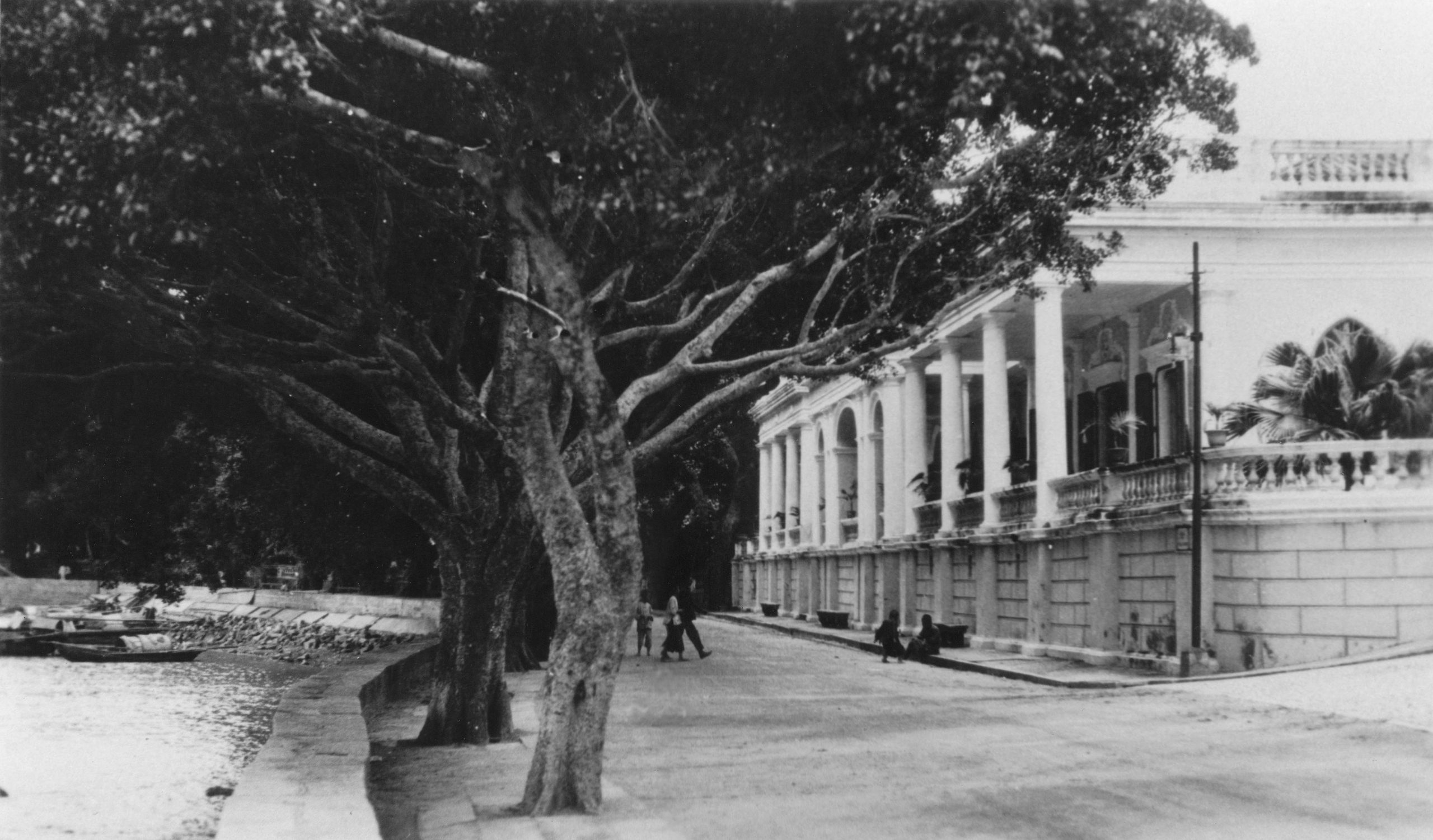
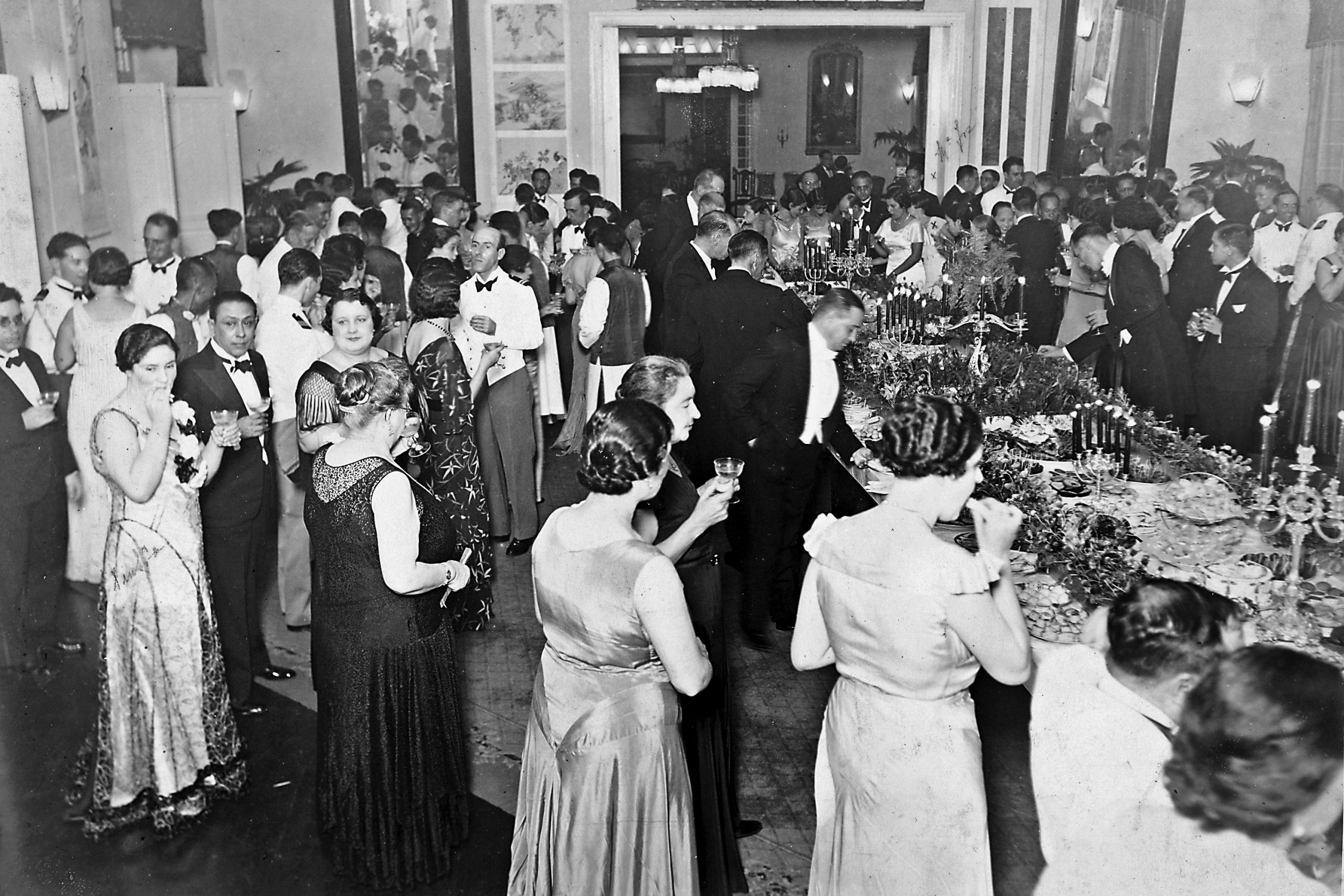
In more recent times, the club has had its own chronicler. Historian and priest Father Manuel Teixeira, who has authored more than 120 books on Asian lands, spent most of his life in Macao. Even today, locals still remember him, with his long white beard hanging from his face, regularly crossing the bridge from Macao to Taipa in the 1980s. His book on the Military Club, ‘Clube Militar de Macau’, which was published in 1982, is still one of the best sources out there that charts the institution’s long history. In it, he clearly distinguishes ‘two generations and mindsets’ – the 1870-1950 generation and the generation from 1950 up to modern day. He notes that the first generation’s purpose was to promote knowledge in Macao by assembling a library in the club that contained books on history, science, military topics and newspapers, all ‘for the purpose of the enlightenment and entertainment of members’.
Over the club’s first 80 years, according to Teixeira, members enriched the club’s library with a plethora of rare books, including first editions of works by some of Portugal’s most celebrated writers. In 1983, during the club’s 113th anniversary conference, the Macanese writer Henrique de Senna Fernandes said that as a young man he was an assiduous reader of those rare and valuable first editions. “Nothing remains of that library,” said Senna Fernandes in 1983. “[It was] stolen, eaten by white ants or burned, as it was, in the back of the building.” But, despite there once being a much-treasured library in the club, Teixeira is critical of the post-1950s generation in his book. He claims the mantra was altered, with the ‘order’ of its aims switched, meaning it became ‘entertainment’ first and ‘enlightenment’ second. He says that sports activities, along with general celebrations, became more commonplace as a result.
That aside, some of the most remarkable pages of the history of old Macao have been written in the club. For instance, during the Pacific War, between 1941 and 1945, Hong Kong was occupied by the Japanese but Macao housed thousands of refugees from the neighbouring territory. Teixeira, in his book, argues that members of Macao’s military forces were scandalised by the Hongkongers during this period as the refugees used the club’s piano to stage cabaret sessions. This sort of lively event was unheard of in the city at the time and, as a result, the piano was soon put under lock and key in the nearby São Francisco military barracks. But the damage, for the austere military leaders in Macao at least, was done. This was the start of a new dawn for the club, which was used by the government’s Treasury Department for a few years after the war before being returned back to the members. It would swiftly become more open-minded and inclusive of new forms of entertainment, laying the foundation for its ability to change with the times and stay relevant.
Famous guests
Today, the Military Club’s walls are adorned with black and white photographs of celebrations involving Portuguese, Macanese and Chinese people. There are also plenty of colour photos that feature former presidents and prime ministers of Portugal together with dignitaries from China. Alongside these images are paintings by renowned local artists like Nuno Barreto or Konstantin Bessmertny. And that’s just the walls. Today, the club’s guest book reads like a ‘who’s who’ of modern China and Portugal. There are messages from former European Commission president José Manuel Durão Barroso – who, as Portugal’s foreign minister, attended the re-opening of the club in 1995 after a renovation project – and also from Li Yuanchao, who, in 1997, signed in as China’s vice-minister for culture before he went on to become vice-president of the People’s Republic of China in 2013.
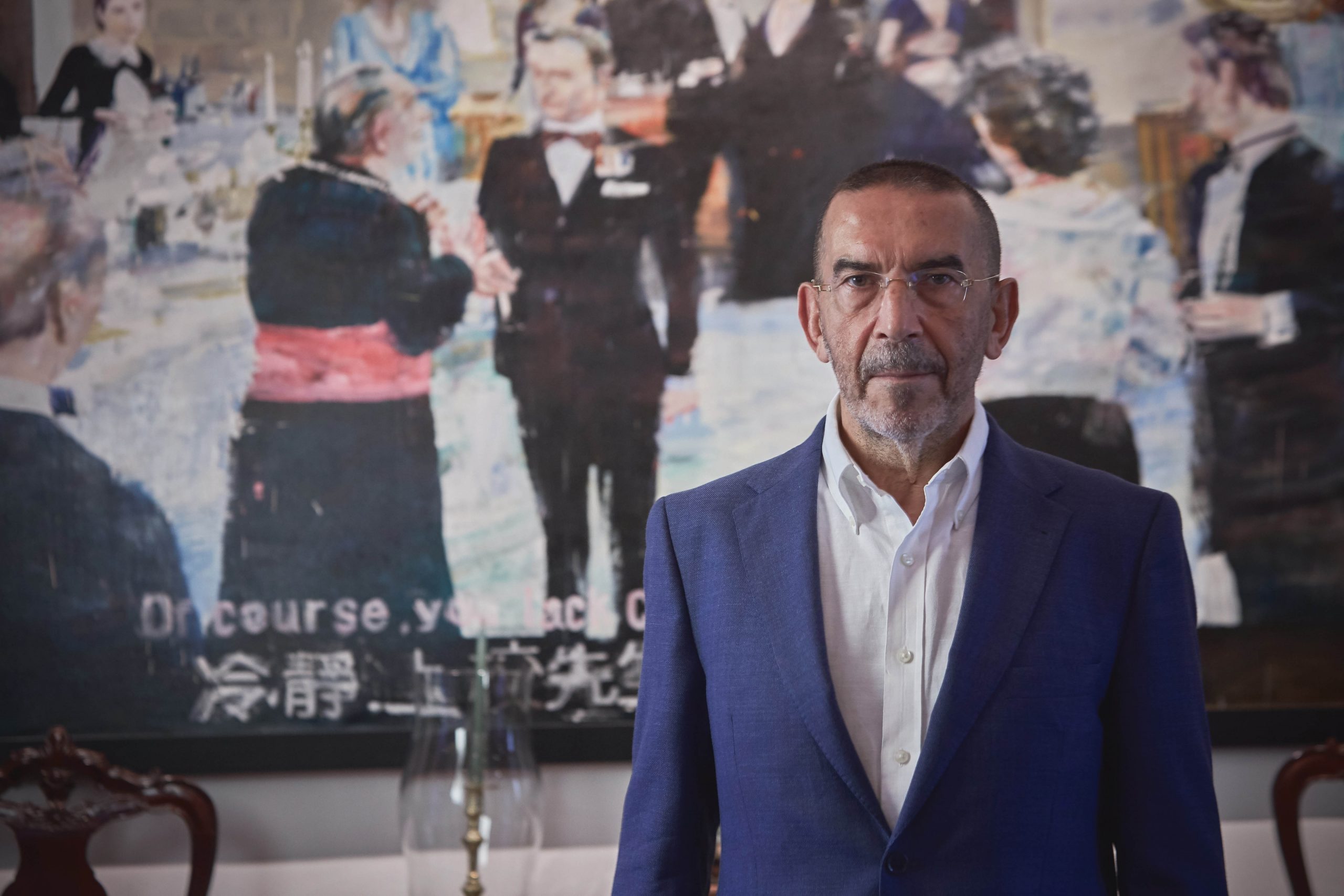
Another well-known name at the club is one of the senior members of its board, Manuel Geraldes. Over the past 30 years, he has been a constant presence at the institution, helping to oversee some of the more recent turning points in its history, including the moment that Macao’s administration was transferred from Portugal to China in 1999. As the city prepared for the change in administration over the preceding years, the club building underwent possibly the most important renovation in its long history. Between 1994 and 1995, around MOP 27 million (US$3.39 million) was spent on the renovation, which saw works done to the club’s exterior and a total reconstruction and enlargement of the inside.
The goal of the ambitious renovation project, Geraldes tells us, was to ‘leave a legacy for the future, with an inspiration from Portugal’. The project mobilised the club’s board, the local government and entrepreneurs in the city, including Edmund Ho Hau Wah, who became Macao’s first Chief Executive in 1999. As the project was underway, Edmund Ho – who, in 1991, was recorded as being club member number 888, an extremely lucky number in Chinese – followed its progress closely.
Local businessmen and companies contributed greatly to the MOP 27 million. One of these benefactors was Stanley Ho, who died just two months ago (read our piece on his life on p10). The late entrepreneur, who was member number 21 in 1991, said at the time of the renovation that he was pleased to support the club’s role in promoting future ‘understanding between the Portuguese and Chinese communities’.
All of the changes over the years – particularly the transformations in Macao’s demographics and the gradual relaxing of the club’s membership rules – have meant that today the majority of the club’s 700 members are non-Portuguese. “We at the club are at a crossroads of China and Portugal,” says Geraldes, adding that the club can be a ‘doorway’ to Chinese culture, particularly as important people from the Mainland regularly use the facility. But how could a Portuguese club with military roots remain relevant in Macao under the post-1999 Chinese administration? This was the conundrum faced by Geraldes and his board at that time. But they came up with an aptly Portuguese and Chinese solution which would not just make the club more relevant but also more financially sustainable. Geraldes was once a military officer in Portugal and, from those days, he gained a lot of experience in food logistics. He is also a lover of fine dining and wines. So he and his team came up with the idea of focusing the club’s attention on people gathering around a table for a good meal – the Portuguese and Chinese way. They transformed the club restaurant into one of the city’s best.
Food, glorious food
Geraldes recalls that Edmund Ho was a key player when it came to deciding upon the new culinary direction of the club. He says that the two men had multiple conversations at that time about the project. “Ho asked me ‘how many Chinese restaurants are there in Macao?’,” claims Geraldes. “He also asked ‘how many are very good?’ and ‘how many very good Portuguese restaurants are there?’.” Geraldes realised that the answer to that last question was ‘very few,’ so he says the logical decision was made to dazzle guests with delicacies from Europe’s westernmost country.
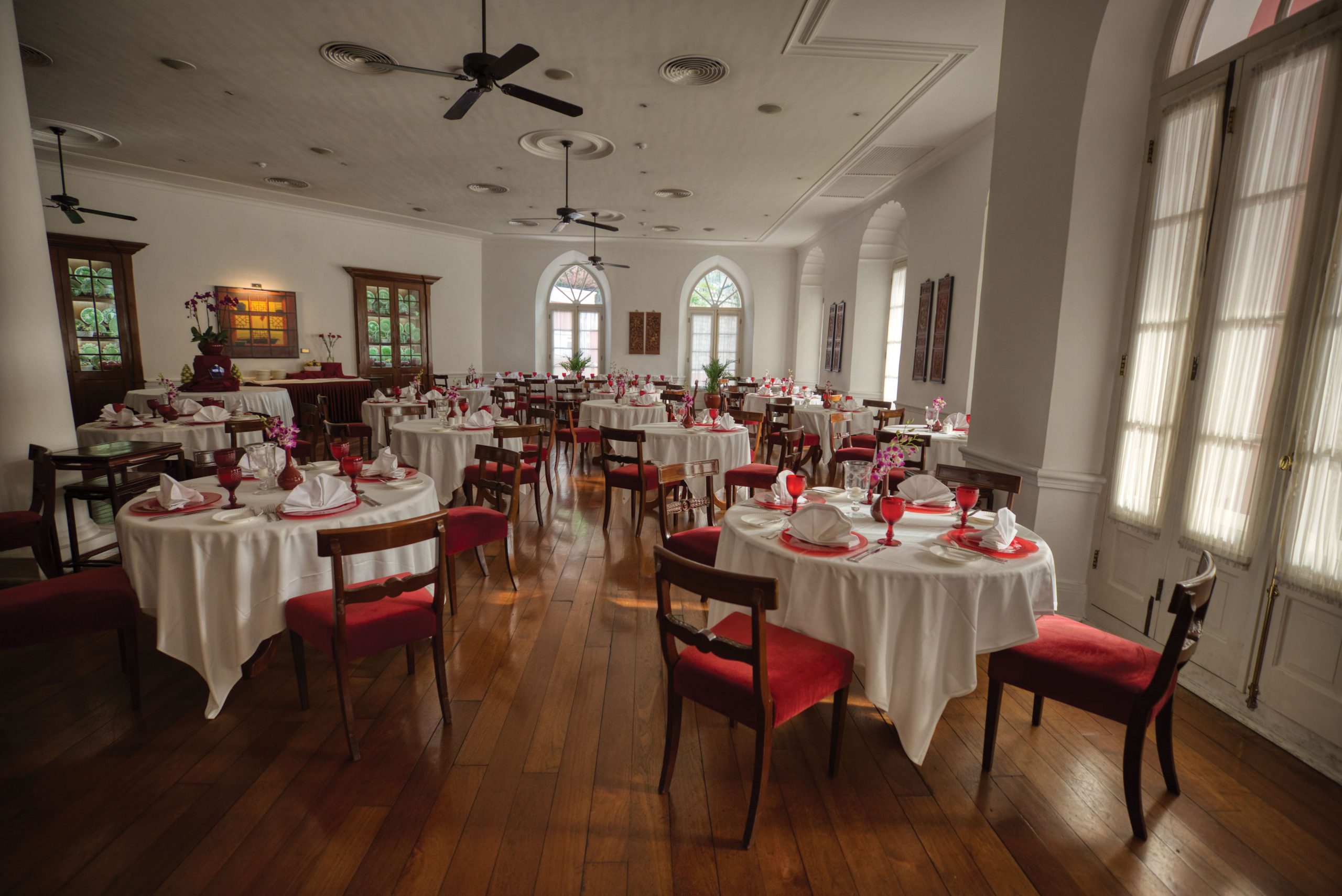
Today, the club’s Portuguese restaurant, which opened to the public in 1995, does indeed dazzle and it really has become the centrepiece of the modern institution. But it wasn’t like that on day one – it’s been the result of a long process of trial and error. For instance, it was reported that an early move to concession it to one of Portugal’s most well-known restaurants hit the rocks after disagreements between chefs and kitchen staff. But Geraldes and his team eventually brought in an army chef he had once worked with called Firmino Pinto, who went on to train the mostly Filipino staff in basic Portuguese cooking. The training went so well that Pinto later returned and, today, most of the club’s kitchen staff has been trained by him. The curry recipe on the club’s menu is Pinto’s.
In 2000, Geraldes and his team started a residency programme with top chefs from Portugal in order to show off the European country’s exceptional contemporary cuisine. The chefs would join the club restaurant for three months at a time. The first was Vítor Sobral, a multi-award winning culinary master who also left several dishes on the menu. Today, the restaurant still retains some visiting chefs and also boasts fado music – a profoundly melancholic and expressive form of Portuguese singing – in the background, as well as a decorative spirit that sees tableware from famous Portuguese ceramics studio Bordallo Pinheiro set against elaborate Chinese folding screens. Many local academics and business people meet here for lunch and its wine list has earned accolades from industry magazines for its incredible Portuguese vintages. From last month, the list includes Portuguese wines ‘Chamelaria’ red and ‘Amplo’ premium red, produced by Quinta da Marmeleira which is led by Macao businessman Wu Zhiwei.
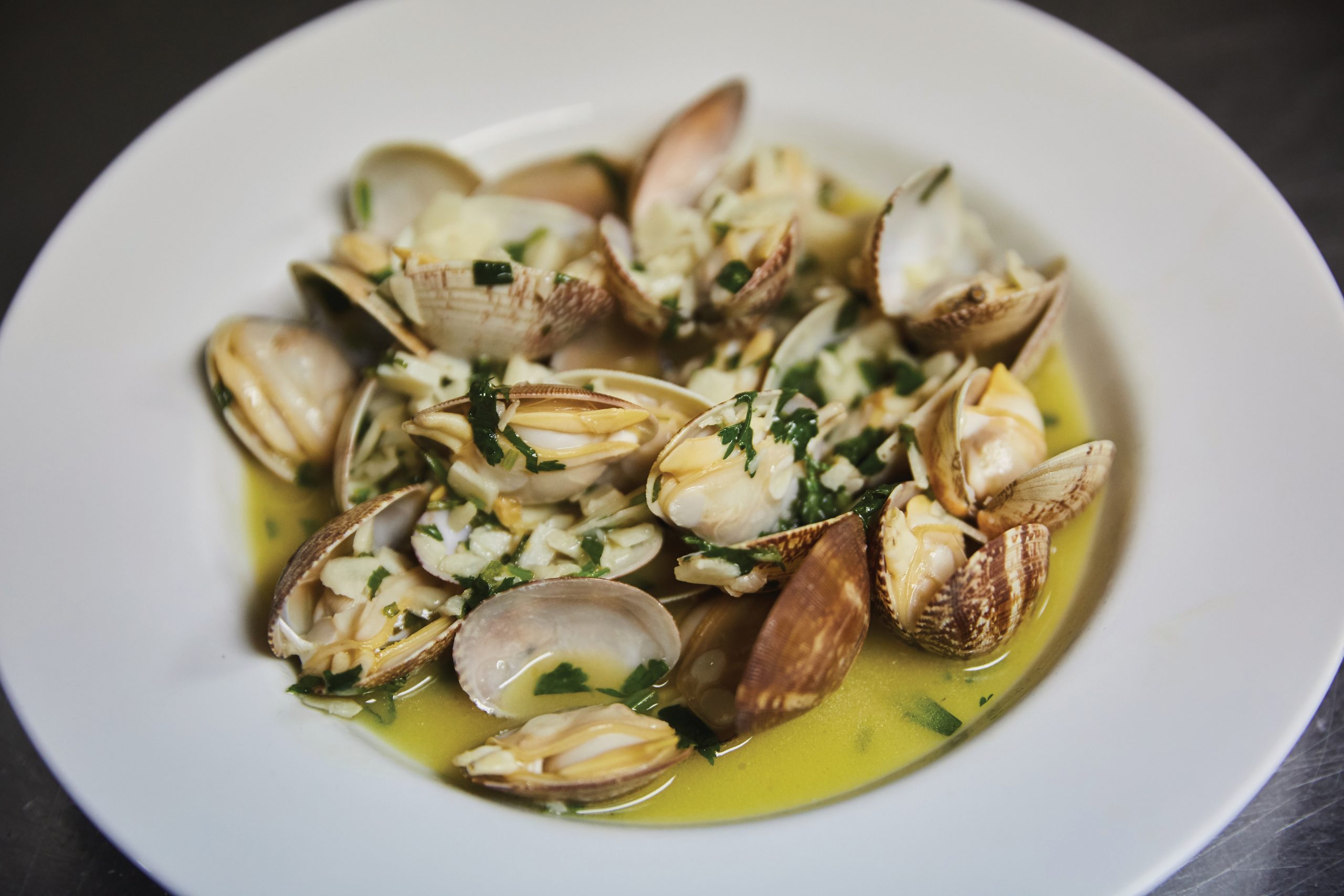
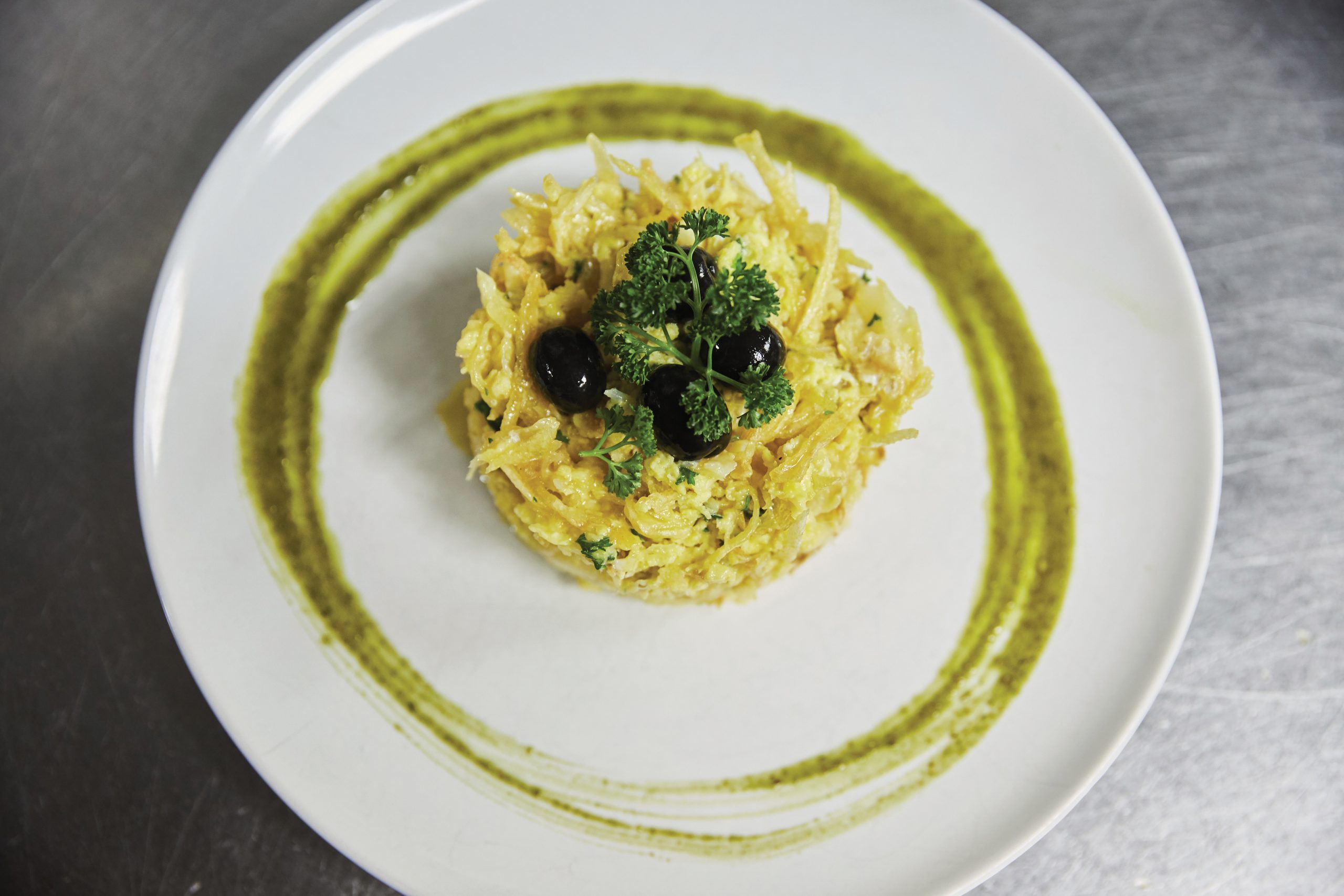
It is difficult to keep up the creative standards at the restaurant, concedes Geraldes. “Running a restaurant demands discipline and constancy,” he says. “I usually tell the staff that for a restaurant to flounder, all it takes is one meal.” But the establishment has nevertheless been a success and it’s become a shining light in Macao’s culinary scene. In terms of the club’s financial sustainability, it has also been an important cog, adds Geraldes. “[The residency programme] was my secret recipe,” he says. “Portuguese culture starts at the table.”
A plethora of culinary stars from Portugal have donned the club’s apron over the past decade, including celebrated maestro Fausto Airoldi in 2011 and multiple Michelin star winner Henrique Sá Pessoa in 2013. Veteran pioneering chef Miguel Castro e Silva also cooked up treats in 2015 and 2018, and a female chef known for ‘reinventing good Portuguese cuisine’, Justa Nobre, created a series of delights in 2012 and 2016. All of these chefs left a signature dish on the menu, making the club the only restaurant in the world where you can taste creations from such an esteemed portion of Portugal’s best contemporary masters.
Noélia Jerónimo, who owns the multi-award-winning Restaurante Noélia & Jerónimo in Cabanas de Tavira on the south coast of Portugal, is one of the most recent resident chefs at the club’s restaurant. The maestro, known for her exceptional seafood dishes, calls the club’s menu ‘a Portuguese food bible’ due to the quality and originality of the recipes – these are not traditional dishes but creative contemporary masterpieces that use local, regional and Portuguese ingredients. During Jerónimo’s stays in Macao, first in 2018 and again at the end of last year, the only problem for the chef has been the need to write her recipes down. “I was told to put the recipes down on paper,” she says, “but I never do anything like that. I keep everything in my head.” Everything else, though, has impressed Jerónimo, including the ‘warm-heartedness’ of the cooking staff and the quality of the local ingredients and dishes.
Along with its regular chef residencies and food festivals, the club has also frequently featured exhibitions of works by artists from Portuguese-speaking countries since 1999. Book launches and conferences have also been often, however in recent months the COVID-19 pandemic has obviously put these on the shelf for a period.
Reflecting Macao’s evolution
The Military Club building is an architectural gem. The blush-coloured colonnade building and the adjacent São Francisco garden feature in many iconic images of old Macao. When it opened, it actually sat next to the waters that surrounded the city. Patrons could sit in the shadow of the porch and listen to the sounds of the sea as the Portuguese ‘lorcha’ sailing vessels floated past. But a century and a half later, the club is almost a kilometre away from its nearest waters at Nam Van Lake. It’s as if it has travelled inland as Macao has grown, reflecting the evolution of the city’s urban landscape.
Bruno Soares and Irene Ó, co-founders of Macao’s O.BS Architects, were behind the 1994-1995 renovation project. Soares tells us that the club’s iconic façade is the only original element left from 1870, along with its chandeliers and a few interior decorations. He says that the interior, in fact, was entirely reconstructed in the project and two new floors were added. When he was asked to do the project, Soares admits he ‘immediately said yes’ – but was also concerned due to ‘the very unique charisma of the building’. However, he says the architects created ‘an environment that had to do with the history of Macao’ with ‘no modern or impactful interventions’. So their ‘subtle and light’ solution was to take exterior decorative elements and ‘transport them to the inside’ to create a sense of ‘unity’. “It was a work of love,” he says, “and of a very intimate connection to the history of the building and to Macao.”
Many architects worked on the club’s interiors over more than 100 years prior to 1995. “They were completely mismatched,” says Soares, pointing out that the restaurant was once adorned with Portuguese ‘azulejo’ tiles and wooden beams – which he describes as ‘forced Portuguese suave’ – while the bar was all brickwork. “It was totally incoherent,” he recalls, “neither Portuguese nor Macanese.” But the style that was adopted in the renovation, says Soares, is in harmony with the exterior, which was originally designed by the Baron of Cercal, António Alexandrino de Melo. Soares says it’s a ‘colonial style with features of Portuguese architecture’, using classical elements ‘in a very original form’. Due to the inside now seamlessly mirroring the outside, ‘most people who go there today think the interiors are original’, he concludes.
The club is not only a time-honoured Luso-Chinese cultural icon but people visit it for a cultural experience which they could not find anywhere else in the city.
The club’s décor mixes traditional elements from Portugal – like ornate wooden furniture, embroidered Arraiolos rugs and the 150-year old chandeliers – with traditional Chinese elements like valuable vases. Soares ranks the club as among Macao’s most iconic civilian buildings, a list that includes the Portuguese Consul’s residence in the former Hotel Bela Vista and the Government House. But, he adds, it’s the one that best communicates with the public because it’s central and is open to visitors from across the world.
A landmark moment
An iconic building with an important history deserves an incredible celebration as it hits its 150th anniversary. However, COVID-19 has done its best to scupper plans this year. Some of the 150th events have already been scrapped – but the club still expects to launch a commemorative book and hold a photo exhibition of 150 historical images towards the end of the year. There will also hopefully be a ‘Macau Artists Salon’ at the club which will bring together local artists to celebrate the anniversary. Regular events, such as food festivals and art shows by people from Portuguese-speaking countries, may yet be cancelled this year but the club’s team are working hard to keep the events running if they can.
COVID-19, however, won’t sour the club representatives’ celebratory mood. Ambrose So, the club’s president, highlights the fact that the institution has retained its ‘great historical relevance in the city’ over the past 150 years. “It is still the case today,” he says. “The club is not only a time-honoured Luso-Chinese cultural icon but people, both local and foreign, visit it for its Portuguese ambience and for a cultural experience which they could not find anywhere else in the city.” So, the chief executive of Macao gaming operator SJM Holdings Ltd, adds that the pre-1999 renovation ‘transformed the club into what it is today’.
“The club,” concludes So, “remains a platform for East-meets-West in a property which distinguished itself with Sino-Latin and, in particular, Portuguese culture. In recent years, it has become a brand name in the region which promotes interaction between artists from Chinese and Portuguese-speaking countries in [the form of] paintings, sculptures and other art forms. In light of Macao’s aspiration to become a world centre of tourism and leisure in the Greater Bay Area in the years ahead, the unique characteristics of the club will surely, alongside other important cultural attractions, help the city realise this aspiration.” If Ambrose So is correct, then the fascinating, iconic Macau Military Club should be entertaining visitors from across the globe in another 150 years from now.
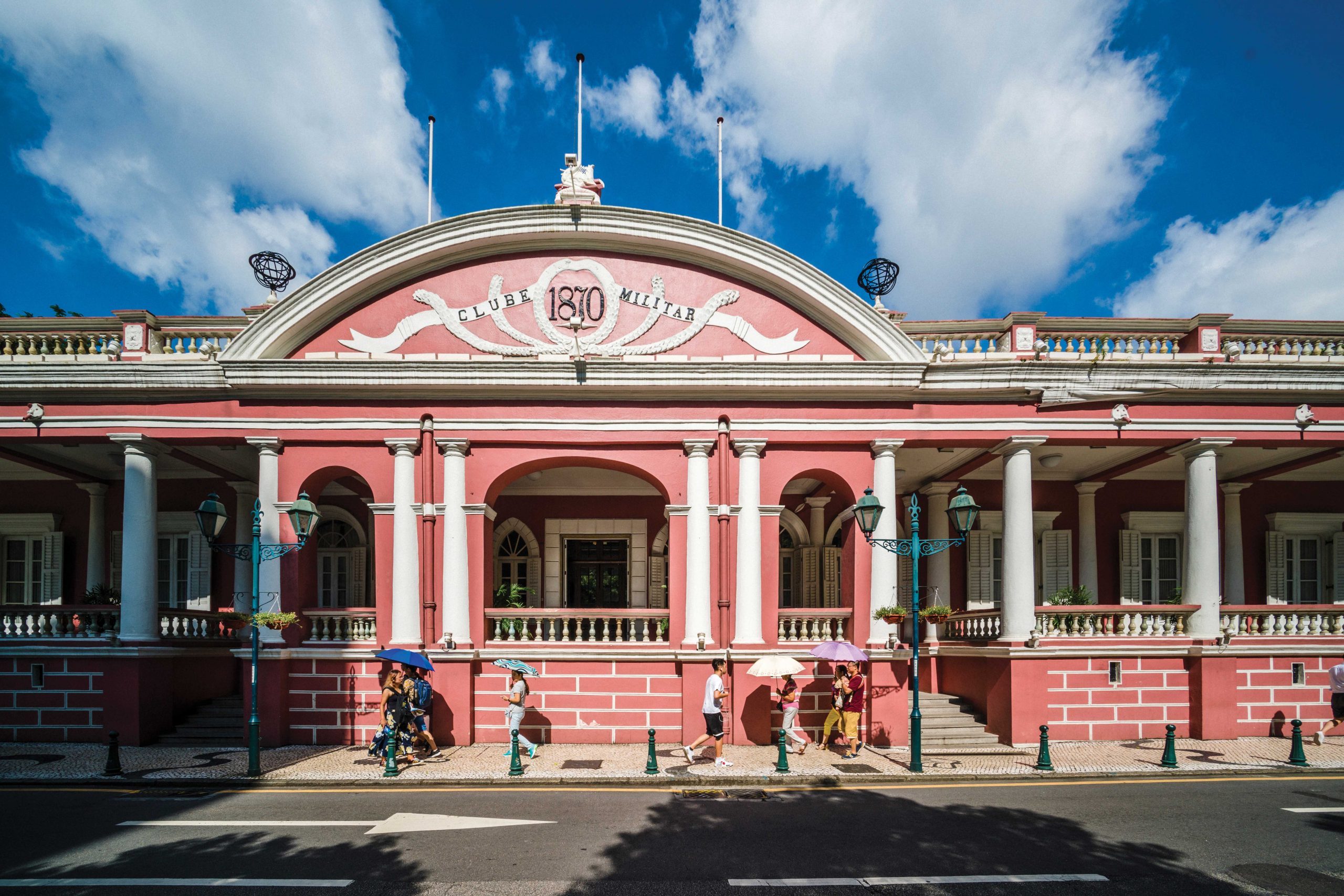
Read more about Military Club’s humble beginnings here.
